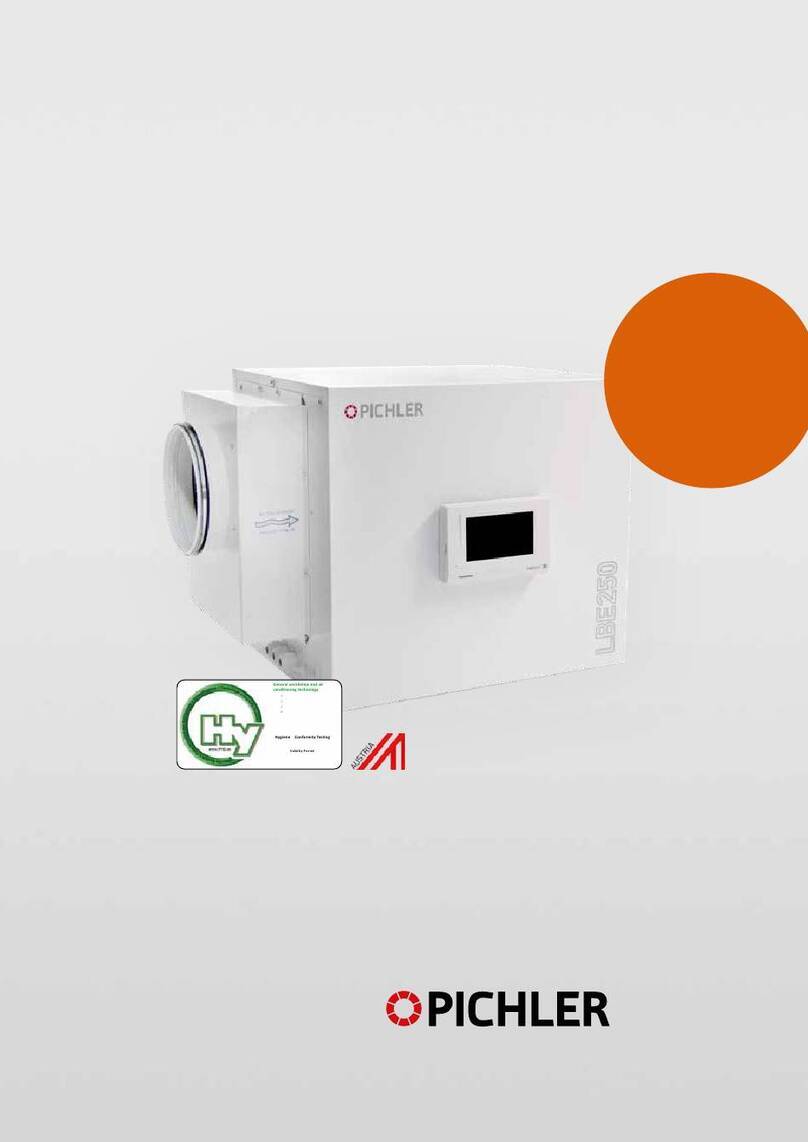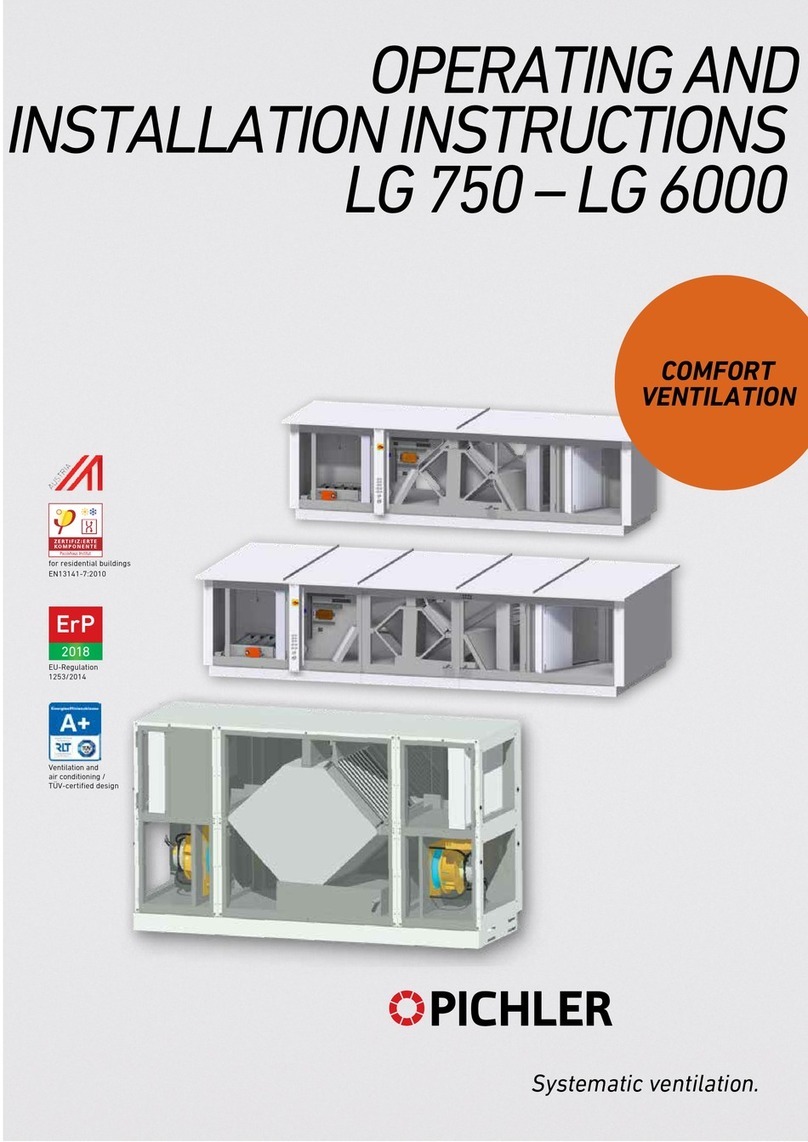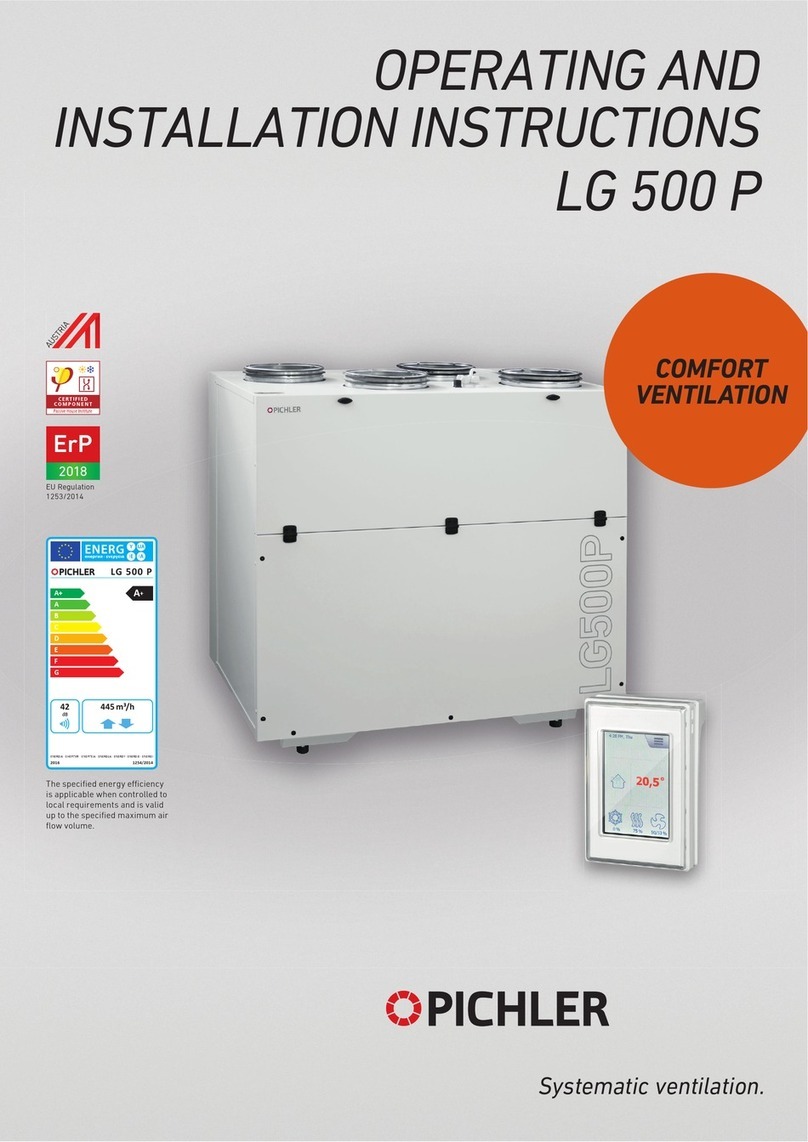Contents
1Introduction ............................................................................................................................................. 4
2General .................................................................................................................................................... 4
2.1Use in compliance with the intended use .................................................................................................. 5
2.1.1
Intended use
............................................................................................................................................................5
2.1.2
Stipulations for operation with fireplaces
.................................................................................................................6
2.1.3
Stipulations in connection with extractor hoods
........................................................................................................6
2.2Liability .................................................................................................................................................... 6
2.3Warranty .................................................................................................................................................. 6
3Safety ...................................................................................................................................................... 7
3.1Symbols used ........................................................................................................................................... 7
3.2Safety regulations .................................................................................................................................... 8
3.2.1
General
....................................................................................................................................................................8
3.2.2
Setting up the unit
....................................................................................................................................................8
3.2.3
Electrical connection work
.......................................................................................................................................9
3.2.4
Operation of the system
...........................................................................................................................................9
4Functioning of the ventilation system .................................................................................................. 10
4.1System description ................................................................................................................................. 10
4.2Possibilities of system expansions for frost protection ........................................................................... 11
4.2.1
Earth heat exchanger (factory settings)
..................................................................................................................11
4.2.2
Brine geothermal energy with optional cooling function (factory setting)
................................................................12
4.2.3
PTC low temperature preheater battery factory setting
..........................................................................................13
4.2.4
Anti-frost protection by shutting down the supply air fan
........................................................................................13
4.3System expansion for the purpose of external auxiliary heating ............................................................. 14
4.3.1
With external warm water heater battery (factory setting)
......................................................................................14
4.3.2
Needs-based system operation - CO2 control
..........................................................................................................14
4.4Ventilation unit ....................................................................................................................................... 15
4.4.1
Description
............................................................................................................................................................15
4.4.2
Advantages and features
........................................................................................................................................15
4.4.3
Layout of the unit
...................................................................................................................................................16
4.4.4
Versions
.................................................................................................................................................................18
4.4.5
Dimensions
............................................................................................................................................................18
4.5Safety devices ........................................................................................................................................ 19
5Technical specifications ....................................................................................................................... 19
5.1Unit specifications .................................................................................................................................. 19
5.2Characteristic external pressure increase - air volume flow with volume flow constant function ........... 20
5.3Characteristic external pressure increase - air volume flow without volume flow constant function ...... 20
5.4Acoustic specifications ........................................................................................................................... 21
6Operator control unit ............................................................................................................................ 21
6.1General information ............................................................................................................................... 21
6.2Control unit "
KOMFORT-G
" ...................................................................................................................... 21
6.2.1
Buttons on the control unit "KOMFORT-G"
...............................................................................................................22
6.2.2
Representation on the display
................................................................................................................................22
6.2.3
Special menu 1 – Operating hour counter (only for specialist installers)
.................................................................24
6.2.4
Special menu 2 - Language settings, basic ventilation, volume flows and fan speed IV
............................................24
7Power unit ............................................................................................................................................. 25
7.1Configuration and diagnosis via the PC software (only for specialist installers) ...................................... 25
7.1.1
Connecting the power section to a PC
.....................................................................................................................25
7.1.2
Software overview
.................................................................................................................................................26
8Messages/Faults .................................................................................................................................. 26
8.1Operating messages on control unit "
KOMFORT-G
" ................................................................................. 26
8.1.1
Deletion of the filter message after a requested filter change
.................................................................................26
8.1.2
Deletion of the filter message after a premature filter change
................................................................................26
8.2Malfunction messages on control unit "
KOMFORT-G
" .............................................................................. 27








































